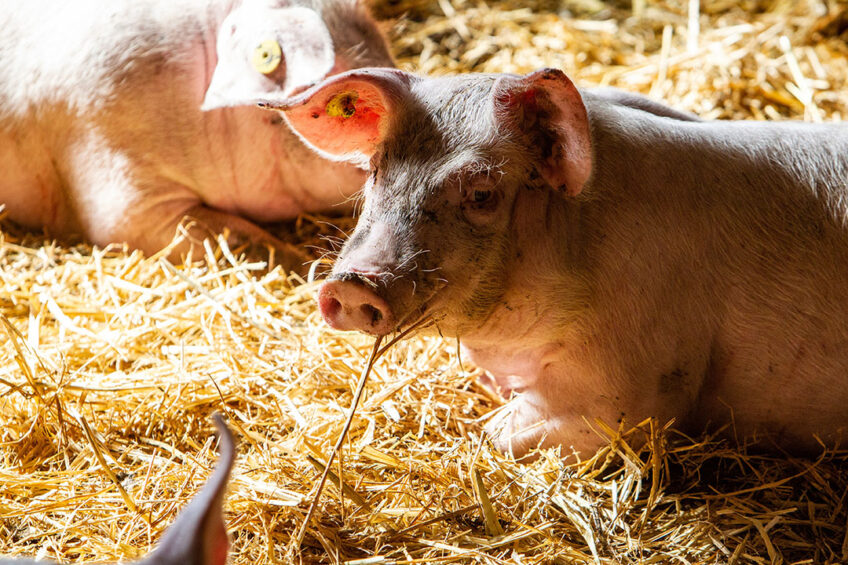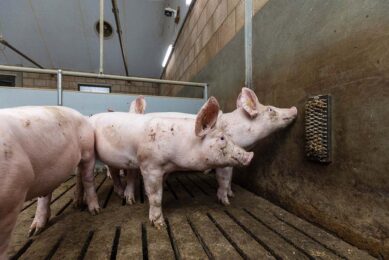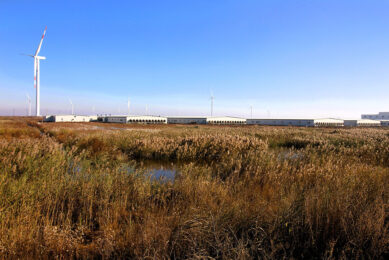UK pig forum highlights air quality innovations

Air quality both inside and outside the pig houses took centre stage at the online UK Pig & Poultry Forums, held on May 12.
Big Dutchman promoting Xaletto concept
Big Dutchman’s director of global support, Daniel Holling, spoke about the Xaletto straw bedding housing system which provides a natural environment for the pigs – it feels like a forest floor and there is no need for any slatted areas. The stonemeal additive to the straw evaporates 100% of water and urine, leaving a solid, nutrient rich manure which could either be used for farmland application or in biogas plants.
Quality rations backed by excellent ventilation can help cut dung production by a quarter, according to Holling. He told online delegates that if the house has the right ventilation and pigs are fed a good quality ration, they will produce just 25kg of dung in their lifetime compared to 103kg on a slatted system. “And it produces 20% fewer emissions than a warm house indoor deep straw system on NH3 base,” he added.
He added it was essential producers looking for proper bedding took into account the correct ventilation concept, correct feeding strategy and the correct bio-activator. The concept was launched in mainland Europe at EuroTier 2018; Pig Progress then visited a pig farm in Germany to see what it looks like in practice.
Inno+: Air scrubbers for ammonia reduction
Simon Lague, business development manager at climate control company Inno+, spoke of the role of air scrubbers in reducing ammonia and their return on investment. He highlighted that single or multi-stage scrubbers could significantly reduce emissions, odour and dust and could meet the needs of planning authorities when submitting applications. Return on investment can be made through heat recovery and improved performance of the animals, he added.

AHDB: Solutions needed to reduce emissions
Jon Foot, head of environment and resource management at the Agricultural Horticultural Development Board (AHDB), said farming practices to reduce emissions needed to move beyond the existing voluntary approach. UK agriculture greenhouse gas emissions had not changed and continue to rise in recent years and 88% of ammonia emissions are from agriculture.
Foot said options for achieving net zero emissions in pigs could be broken down into six areas:
- Increase feed conversion efficiency;
- Improve animal health – while further research is needed in the pig sector, the link in other livestock species is much clearer. For example, lamb gastro-intestinal nematodes can increase greenhouse gases by 10% and parasitic worms can increase methane emissions by 33%. In beef, bovine viral diarrhoea (BVD) raises the carbon footprint by up to 130%;
- Bioenergy – on farm generation;
- Reduce inorganic fertiliser use;
- Greater use of home-grown co-products in feed; and
- Constant temperature and environment – better building stock.
Clean air strategy
Improving water and air quality is also of interest for Catchment Sensitive Farming (CSF), a partnership between the UK Department for Environment, Food and Rural Affairs (Defra), the Environment Agency and Natural England. CSF offers farmers free training, advice and support for grant applications.
Philippa Mansfield, CSF’s sensitive farming lead, told the online delegates that UK government’s clean air strategy was introducing new rules with actions designed to reduce ammonia emissions from farming, including the need for producers to cover slurry and digestate stores by 2027 and tighter restrictions on fertiliser and organic manure spreading.
Mansfield said there were countryside stewardship grants available in high priority areas for water and air quality for covers for slurry and digestate stores. Taking action in this area can reduce ammonia emissions by between 60-80%, reduce phosphate losses to water and allows the spreading when the crop need nutrients to avoid soil damage.
Farmers can also receive funding for tree planting for ammonia capture and there are also funds for outdoor pigs to improve soil and water quality. For example, the planting of legume and herb rich swards is available at € 359/ha (£309).
The online forums are being held in years that the biennial British Pig and Poultry Fair does not physically take place. Another session looked at challenges for swine producers in the years ahead.
 Beheer
Beheer








 WP Admin
WP Admin  Bewerk bericht
Bewerk bericht